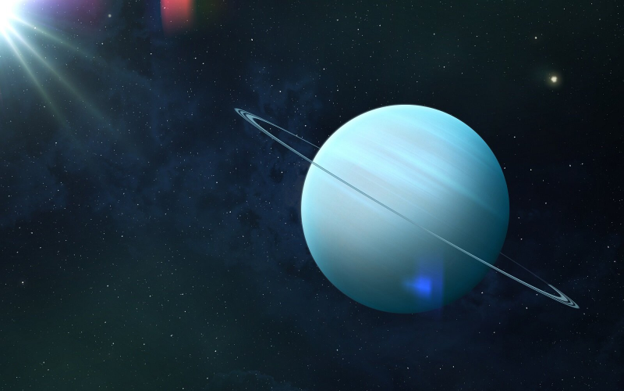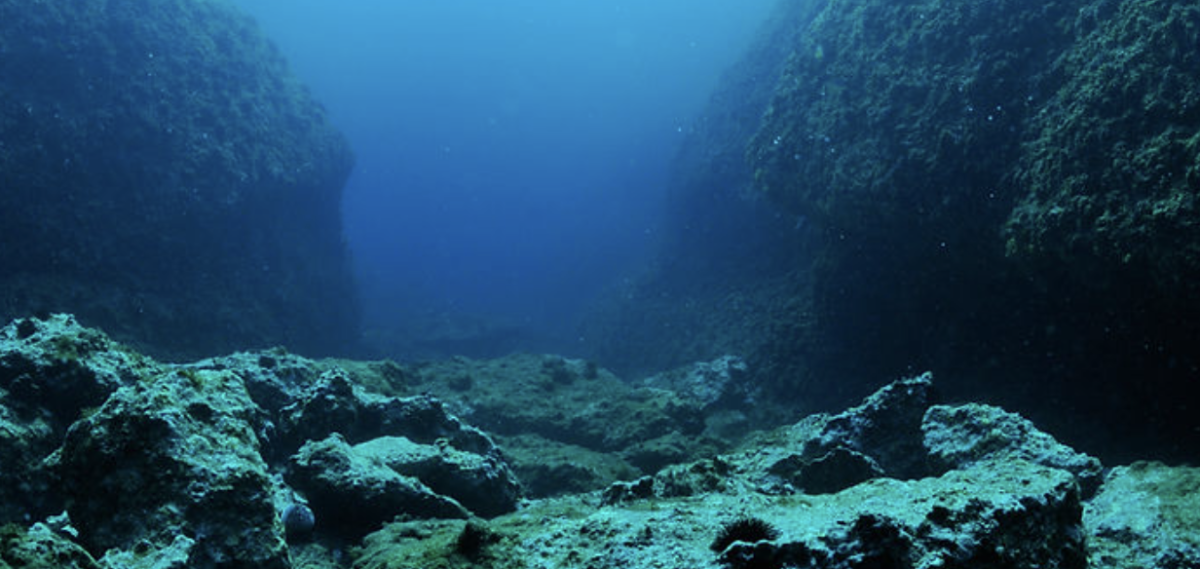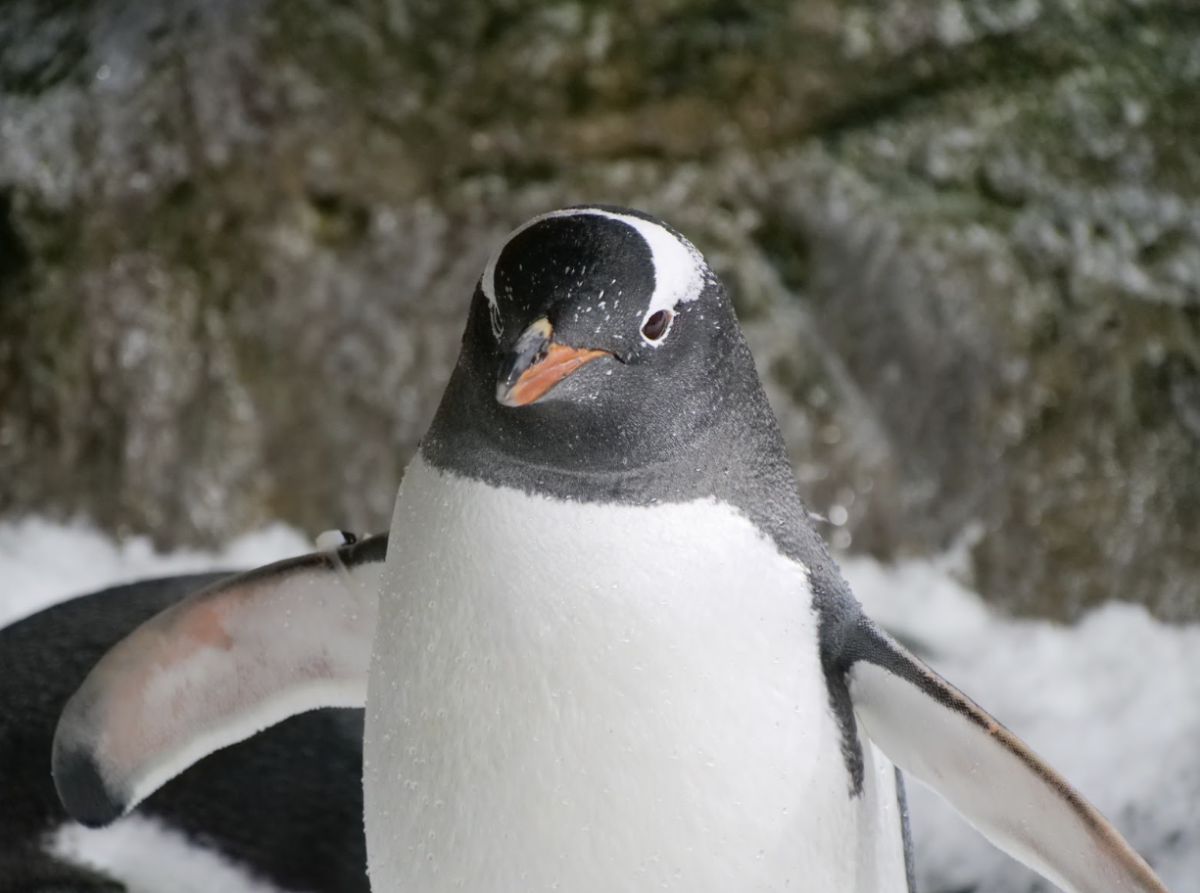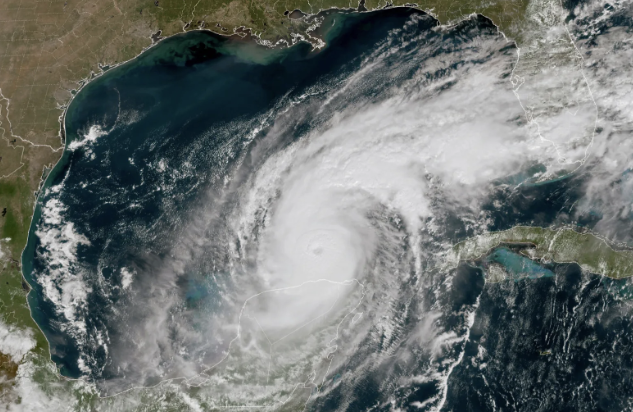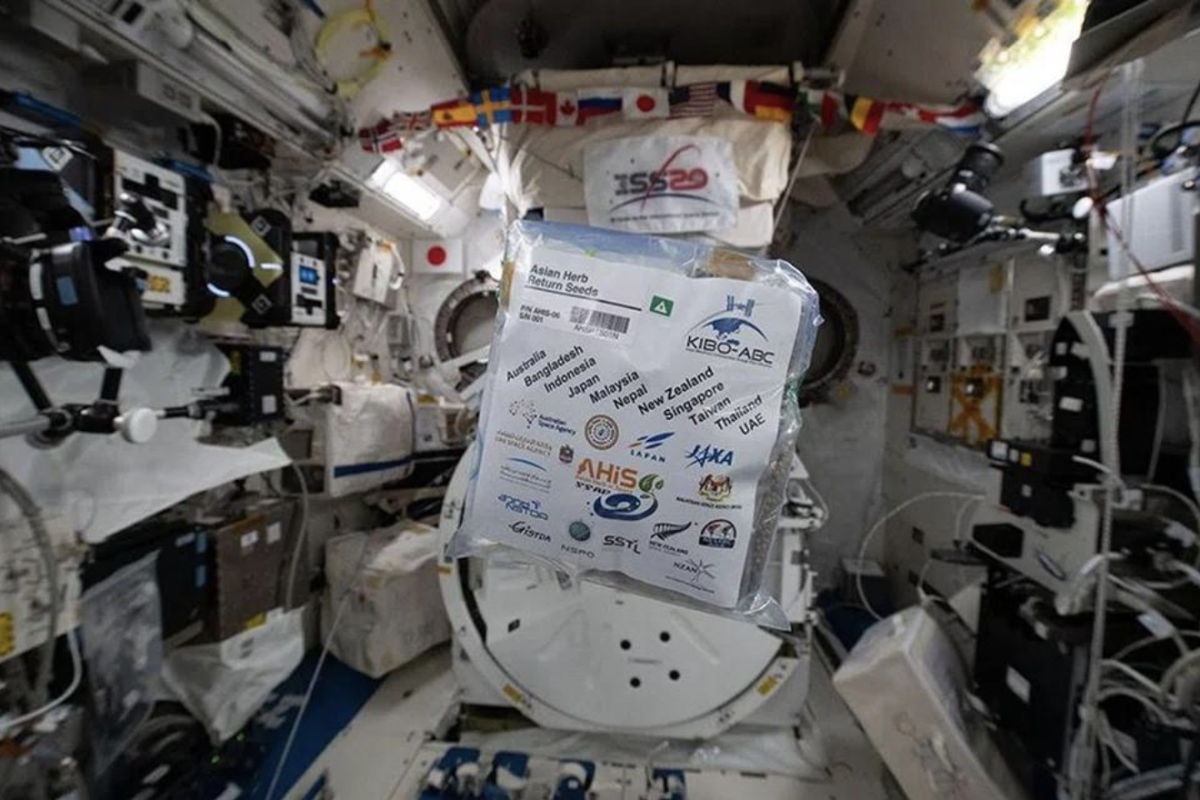Nestled in the far reaches of our solar system lies a world of mystery and intrigue – the seventh planet from the Sun, Uranus. Often overlooked in favor of its more famous neighbors, Uranus holds a treasure trove of secrets waiting to be uncovered.
 Uranus, named after the Greek god of the sky, was discovered in 1781 by the British astronomer Sir William Herschel. It boasts a striking blue-green hue, caused by its atmosphere primarily composed of hydrogen, helium, and methane. This methane absorbs red light, giving Uranus its distinctive color.
Uranus, named after the Greek god of the sky, was discovered in 1781 by the British astronomer Sir William Herschel. It boasts a striking blue-green hue, caused by its atmosphere primarily composed of hydrogen, helium, and methane. This methane absorbs red light, giving Uranus its distinctive color.
Uranus is a gas giant, similar in composition to Jupiter and Saturn. However, it differs significantly in several aspects. Its diameter spans approximately 50,724 kilometers, making it the third-largest planet in our solar system. Despite its massive size, Uranus has a lower density compared to Jupiter and Saturn, indicating a larger proportion of water and other volatile substances in its composition.
One of the most peculiar features of Uranus is its extreme axial tilt. Unlike other planets, which typically have axial tilts ranging from zero to 30 degrees, Uranus is tilted at a staggering 98 degrees. This tilt causes the planet to essentially roll on its side as it orbits the Sun, leading to unusual seasonal variations and a unique magnetic field.
The atmosphere of Uranus is a dynamic realm of swirling clouds and violent storms. Winds on Uranus can reach speeds of up to 900 kilometers per hour, making it one of the windiest planets in our solar system. These winds, combined with the planet’s unusual rotation, create intricate cloud patterns and atmospheric phenomena.
Despite its turbulent atmosphere, Uranus exhibits a distinct lack of visible features compared to Jupiter and Saturn. Scientists believe this may be due to a combination of factors, including the presence of haze layers and a relatively low abundance of storm systems.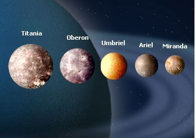
Uranus is orbited by a retinue of 27 known moons, each with its own unique characteristics. The largest of these moons, Titania and Oberon, rival the size of Earth’s moon and exhibit diverse geological features, including craters, valleys, and plains. Other notable moons include Miranda, with its fractured surface resembling a patchwork quilt, and Ariel, known for its extensive system of canyons and valleys.
In addition to its moons, Uranus is surrounded by a system of faint rings. These rings, composed of dust and rocky debris, were first discovered in 1977 and have been studied extensively by spacecraft such as Voyager 2. Despite their relative obscurity, Uranus’ rings play a crucial role in our understanding of planetary formation and evolution.
Exploration and Future Missions:
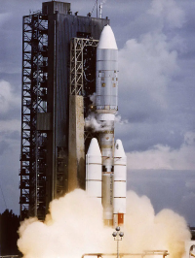 Despite its distant location, Uranus has not escaped the scrutiny of space exploration. In 1986, NASA’s Voyager 2 spacecraft conducted a historic flyby of the planet, providing invaluable data and images of its atmosphere, moons, and rings. However, due to its immense distance from Earth, Uranus remains largely unexplored compared to other planets in our solar system.
Despite its distant location, Uranus has not escaped the scrutiny of space exploration. In 1986, NASA’s Voyager 2 spacecraft conducted a historic flyby of the planet, providing invaluable data and images of its atmosphere, moons, and rings. However, due to its immense distance from Earth, Uranus remains largely unexplored compared to other planets in our solar system.
In recent years, there has been growing interest in sending a dedicated mission to Uranus to further unravel its mysteries. Proposed missions include orbiters equipped with advanced instrumentation to study the planet’s atmosphere, magnetic field, and moons in greater detail. Such missions hold the promise of revolutionizing our understanding of this enigmatic world and shedding light on the processes that shape the outer reaches of our solar system.
Uranus, with its striking appearance and intriguing characteristics, continues to captivate the imagination of scientists and space enthusiasts alike. From its extreme axial tilt to its dynamic atmosphere and diverse moon system, Uranus presents a wealth of opportunities for exploration and discovery. As we continue to unlock the secrets of this distant giant, we inch closer to unravelling the mysteries of our solar system and the universe beyond.
Sources & Recommended Reading:
- https://medium.com/starts-with-a-bang/why-is-uranus-the-only-planet-without-interesting-features-on-it-8745511ece78
- https://www.nasa.gov/history/35-years-ago-voyager-2-explores-uranus/
- https://science.nasa.gov/uranus/exploration/
- https://science.nasa.gov/uranus/facts/
- https://www.nationalgeographic.com/science/article/uranus
- https://medium.com/@castanzodepisca7/exploring-the-mysteries-of-uranus-the-icy-giant-of-the-solar-system-f218217b8396


